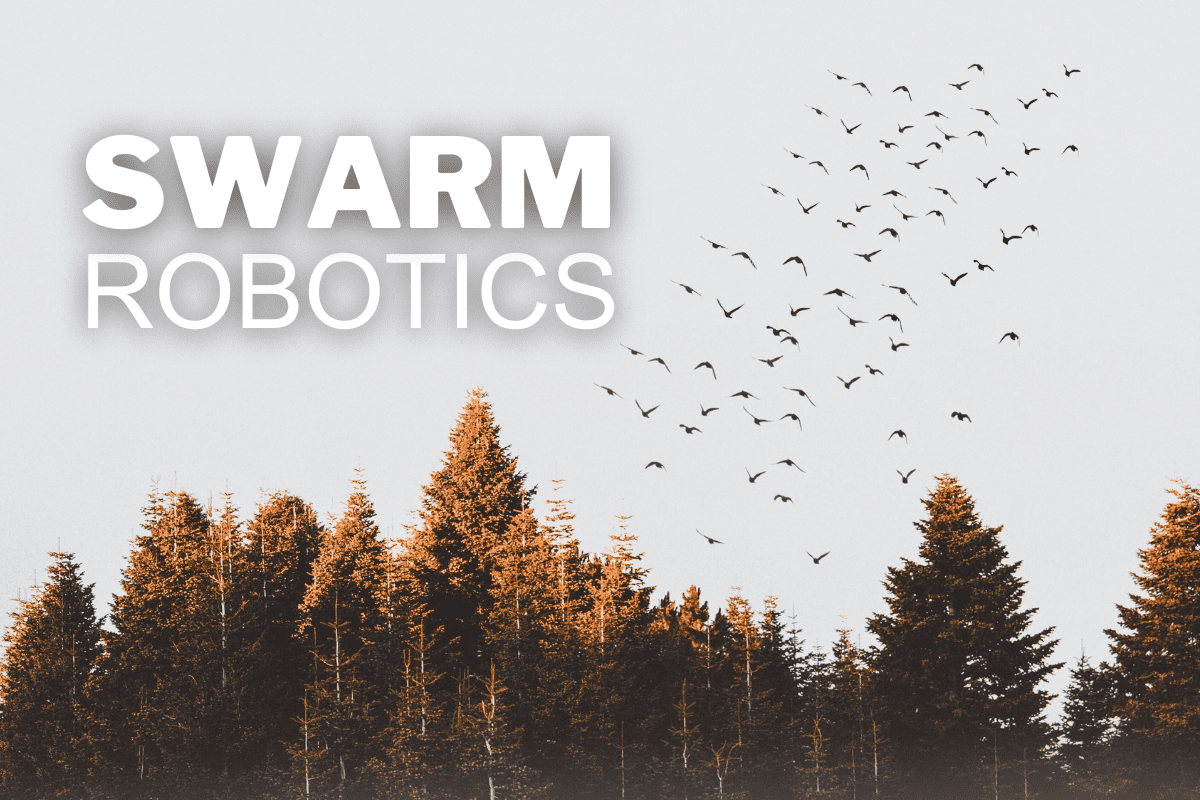In recent years, there has been a significant shift in the field of robotics, with researchers and engineers exploring new and innovative ways to enhance the capabilities of robotic systems. One such emerging field is Swarm Robotics or Collective Robotics, which holds the promise of revolutionizing various industries and sectors. This article will provide an in-depth understanding of swarm robotics, its working principles, advantages, applications, challenges, and the potential it holds for the future.
Introduction to Swarm Robotics
Swarm robotics (Link) is a branch of robotics that draws inspiration from the behavior of social insects, such as ants, bees, and termites, to design and develop systems composed of multiple autonomous robots called swarm robots. These robots work collaboratively to perform tasks that would be challenging or impossible for an individual robot to accomplish alone. The key idea behind collective robotics is to leverage the power of collective intelligence and decentralized control to achieve complex goals.
How Swarm Robotics Works
Swarm robotics operates on the principle of self-organization, where each individual robot in the swarm follows a simple set of rules and interacts with its environment and other robots. These rules enable the robots to communicate, coordinate their actions, and adapt to changes in the environment. By employing local interactions and decentralized decision-making, swarm robots can exhibit emergent behaviors and perform tasks efficiently.
The communication and coordination among swarm robots can be achieved through various mechanisms, such as direct robot-to-robot communication, indirect communication through the environment, or a combination of both. Different algorithms and techniques, including artificial intelligence and machine learning, are employed to enable swarm robots to sense their environment, make decisions, and carry out actions collectively.
Also Read: How Self-Healing Materials Are Changing the Game
Advantages of Swarm Robotics
Swarm robotics offers several advantages over traditional single-robot systems. Firstly, swarm robots can work in parallel, allowing them to accomplish tasks more quickly and efficiently. As the number of robots in the swarm increases, the overall performance and robustness of the system improve. Additionally, collective robotics provides redundancy, as the failure of individual robots does not lead to the failure of the entire system.
Furthermore, collective robotics enables scalability, as new robots can be easily integrated into the swarm without requiring extensive reprogramming or modifications. This flexibility allows swarm robots to adapt to changing requirements and environments. Moreover, swarm robotics promotes fault-tolerance, as the loss or malfunctioning of a few robots does not critically affect the overall performance and functionality of the swarm.
Applications of Swarm Robotics
Swarm robotics has a wide range of applications across various domains. Swarm robots have a wide range of applications in agriculture, including pollination, crop monitoring, and precision agriculture, leading to improved crop yield and efficiency. They are also highly effective in search and rescue missions, as they can navigate hazardous environments and locate survivors more efficiently than traditional search teams. Additionally, collective robotics plays a significant role in manufacturing by optimizing production processes through task coordination and maintaining a flexible and adaptive workflow.
collective robotics also has potential applications in surveillance and security, where swarm robots can patrol areas, monitor for threats, and gather real-time information. In healthcare, swarm robots can assist in surgeries, drug delivery, and patient monitoring, enhancing medical procedures and patient care. Additionally, collective robotics finds applications in exploration, environmental monitoring, construction, and many other fields.
Challenges and Limitations of Swarm Robotics
While swarm robotics holds immense promise, it also faces several challenges and limitations. One key challenge is ensuring effective coordination and cooperation among the swarm robots. As the number of robots increases, the complexity of their interactions and decision-making also grows. Designing algorithms and mechanisms to achieve efficient collaboration and avoid conflicts is a significant research area.
Another challenge is maintaining robustness and adaptability in dynamic and uncertain environments. Swarm robots need to respond to changes in their surroundings, such as obstacles or the loss of robots from the swarm, without compromising the overall performance. Developing strategies for self-repair, self-reconfiguration, and adaptive behaviors is crucial for the success of collective robotics.
Moreover, ensuring scalability and scalability of collective robotics systems is a challenge. As the number of robots grows, managing communication, power supply, and computational resources becomes more complex. Efficient resource allocation, communication protocols, and energy management techniques need to be devised to support large-scale collective robotics deployments.
The Future of Swarm Robotics
The future of swarm robotics looks promising, with the potential to revolutionize various industries and domains. Advances in artificial intelligence, machine learning, and swarm algorithms will continue to enhance the capabilities of swarm robots. Improved hardware sensors and actuators, will enable swarm robots to perceive environment accurately and perform complex tasks with precision.
collective robotics is likely to find applications in areas such as smart cities, autonomous transportation, infrastructure maintenance, and even space exploration. The ability of swarm robots to work collaboratively and adapt to dynamic environments makes them well-suited for tackling complex real-world challenges. With ongoing research and development, collective robotics is poised to become an integral part of our technological future.
Conclusion
Swarm robotics represents a significant advancement in the field of robotics, harnessing the power of collective intelligence and decentralized control. This article provided an overview of collective robotics, its working principles, advantages, applications, challenges, and future prospects. As collective robotics continues to evolve, it holds the potential to revolutionize industries, improve efficiency, and solve complex problems. Embracing swarm robotics will pave the way for a new era of intelligent and collaborative robotic systems.
FAQs
Q1. Are swarm robots autonomous?
Yes, swarm robots are autonomous, meaning they can make decisions and perform actions without external control.
Q2. How do swarm robots communicate with each other?
Swarm robots can communicate with each other through direct robot-to-robot communication or indirect communication through the environment.
Q3. Can swarm robots adapt to changes in the environment?
Yes, swarm robots are designed to adapt to changes in the environment by employing decentralized decision-making and adaptive behaviors.
Q4. What are the advantages of swarm robotics in agriculture?
Collective robotics in agriculture can improve crop yield and efficiency through tasks such as pollination, crop monitoring, and precision agriculture.
Q5. How scalable are swarm robotics systems?
Collective robotics are scalable, allowing new robots to be easily integrated into the swarm without requiring extensive reprogramming or modifications.




